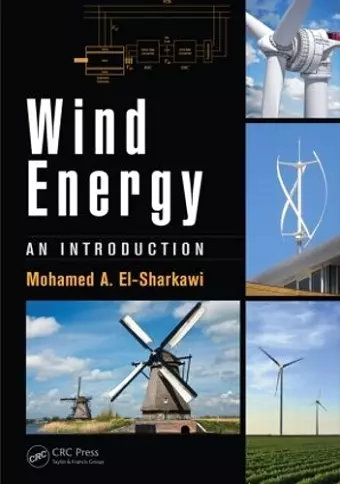Wind Energy
An Introduction
Format:Hardback
Publisher:Taylor & Francis Inc
Published:10th Jun '15
Currently unavailable, our supplier has not provided us a restock date

Wind Energy: An Introduction covers wind energy system types, operation, modeling, analysis, integration, and control. Beginning with a history of the development of wind energy, this comprehensive book:
- Explains the aerodynamic theories that govern the operation of wind turbines
- Presents wind energy statistics to address the stochastic nature of wind speed
- Employs the statistical modeling of wind speed to evaluate sites for wind energy generation
- Highlights the differences between the most common types of wind turbines
- Analyzes the main power electronic circuits used in wind energy
- Details the induction, synchronous, and permanent magnet generators from the basic principle of induced voltage to the steady-state and dynamic models
- Explores the operation, stability, control, and protection of type 1, 2, 3, and 4 wind turbines
- Discusses the main integration challenges of wind energy systems with electric utility systems
- Features numerous models, illustrations, real-world examples, and exercise problems
- Includes a solutions manual and figure slides with qualifying course adoption
Wind Energy: An Introduction requires a basic knowledge of electric circuit theory, making it an ideal text for students at the senior-undergraduate and graduate levels. In addition, the book provides practicing engineers with a handy professional reference.
"The book is an introduction to wind power, as the title indicates. El-Sharkawi (electrical engineering, Univ. of Washington, Seattle) presents the topic from a research and an industry point of view, with a lean toward electrical engineering aspects. Early chapters focus on the history of the technology, aerodynamics, and wind statistics (together forming the first fifth of the book). In following chapters, he discusses different types of converters, generators, wind turbine systems, and grid integration. The book reads easily, and benefits from a suitable number of (mostly color) figures, numerous worked-out examples, and end-of-chapter exercises. Although numerous books on wind power are already available (some very comprehensive), this work offers a relatively concise, well-organized resource; it would be an ideal textbook for undergraduate and graduate-level courses on wind energy. The book will be useful to advanced students and general readers interested in learning about the fundamentals of wind power. Readers need a basic knowledge of electrical engineering (at the undergraduate level) to gain the most from the text. Summing up: Recommended. Upper-level undergraduates through professionals/practitioners; two-year technical program students; informed general readers."
—M. Alam, University of California, Berkeley, USA, for CHOICE, March 2016
"Professor El-Sharkawi meets the growing demand from students and engineers interested in, or already working on, issues related to wind generation with a book covering all aspects of wind-power electrical engineering. As with his previous publications, El-Sharkawi succeeds in covering this important topic in great depth and clarity. The material is well presented following a logical development of the relevant topics. I would recommend this book to anyone interested in the subject of wind power generation."
—Izzy Kerszenbaum, IzzyTech Electrical Power Engineering Consulting & Training, Irvine, California, USA
"This book provides a rigorous introduction to the modeling and analysis of the power electronics at the heart of wind energy systems. It will serve as an essential component of modern energy curricula at the undergraduate and graduate levels."
—John O. Dabiri, California Institute of Technology, Pasadena, USA
"This book is well organized and covers many interesting topics related to grid integration of wind energy systems. It also covers key integration issues e.g. system stability, fault ride-through, variability of wind speed, and reactive power. This text book will be very useful to the engineering students as well as energy professionals."
—Prof. Mohan Kolhe, University of Agder (Norway)
ISBN: 9781482263992
Dimensions: unknown
Weight: 906g
355 pages